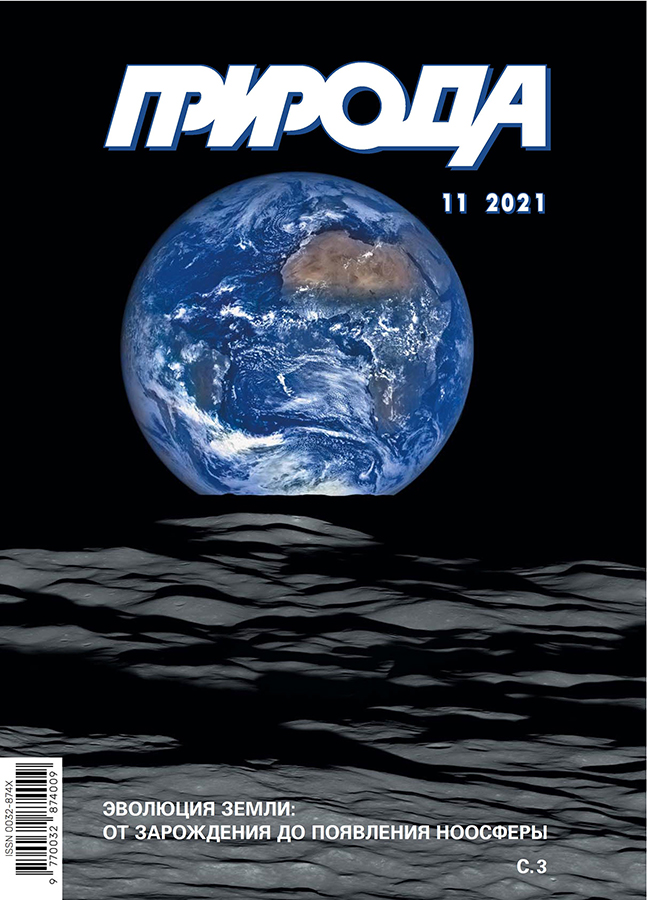The Roots of Geophagy and Rare Earth Elements
- Authors: Panichev A.M1,2, Baranovskaya N.V3
-
Affiliations:
- Pacific Geographical Institute, Far Eastern Branch of RAS
- Far Eastern Federal University
- Tomsk Polytechnic University
- Issue: No 11 (2021)
- Pages: 23-34
- Section: Articles
- URL: https://journals.eco-vector.com/0032-874X/article/view/628075
- DOI: https://doi.org/10.7868/S0032874X2111003X
- ID: 628075
Cite item
Abstract
Large-scale studies of the chemical composition of natural waters, soils, “edible” lands, vegetation, and animal tissues in two areas of Sikhote-Alin and literature data for Africa evidence for the “rare-earth” hypothesis of geophagy among humans and animals. Thus, geophagy in both animals and humans develops in landscapes with abnormally high or abnormally low concentrations of rare earth elements, but especially in landscapes with an abnormal natural ratio of rare earth elements of light and heavy subgroups. We suggest that the main mechanism of geophagy is to regulate the concentration and the ratio of rare earth elements in the body.
Keywords
About the authors
A. M Panichev
Pacific Geographical Institute, Far Eastern Branch of RAS; Far Eastern Federal University
Email: sikhote@mail.ru
Vladivostok, Russia; Vladivostok, Russia
N. V Baranovskaya
Tomsk Polytechnic UniversityTomsk, Russia
References
- Stockstad D.S., Morris M.S., Lory E.C. Chemical characteristics of natural licks used by big game animals in western Montana. Trans. N. Amer. Wildlife Conf. 1953; 18: 247–257.
- Burchfield S.R., Elich M.S., Woods S.C. Geophagia in response to stress and arthritis. Physiology & Behavior. 1977; 19(2): 265–267. doi: 10.1016/0031-9384(77)90337-7.
- Panichev A.M. Rare earth elements: Review of medical and biological properties and their abundance in the rock materials and mineralized spring waters in the context of animal and human geophagia reasons evaluation. Achievements in the Life Sciences. 2015; 9(2): 95–103. doi: 10.1016/j.als.2015.12.001.
- Redling K. Rare Earth Elements in Agriculture with Emphasis on Animal Husbandry. Dissertation, LMU München: Tierärztliche Fakultät, 2006. doi: 10.5282/edoc.5936. Availably at: https://edoc.ub.uni-muenchen.de/5936/
- Protano G., Riccobono F. High contents of rare earth elements (REEs) in stream waters of a Cu-Pb-Zn mining area. Environ Pollut. 2002; 117(3): 499–514. doi: 10.1016/s0269-7491(01)00173-7.
- Panichev A.M., Baranovskaya N.V., Seryodkin I.V., et al. Landscape REE anomalies and the cause of geophagy in wild animals at kudurs (mineral salt licks) in the Sikhote-Alin (Primorsky Krai, Russia). Environ. Geochem. Health. 2021. doi: 10.1007/s10653-021-01014-w.
- Паничев А.М., Барановская Н.В., Чекрыжов И.Ю. и др. Редкоземельные элементы как причинный фактор геофагии среди растительноядных животных. Доклады РАН. Науки о Земле. 2021; 499(1): 82–86. doi: 10.31857/S2686739721070082.
- Паничев А.М. Литофагия: геологические, экологические и биомедицинские аспекты. М., 2011.
- Panichev A.M., Golokhvast K.S., Gulkov A.N. et al. Geophagy in animals and geology of kudurs (mineral licks): a review of Russian publications. Environ. Geochem. Health. 2013; 35(1): 133–152. doi: 10.1007/s10653-012-9464-0.
- Gaillardet J., Viers J., Dupre B. Trace elements in rivers waters. Treasure on Geochemistry. Amsterdam, 2004; 5: 225–272.
- Харитонова Н.А., Вах Е.А. Редкоземельные элементы в поверхностных водах Амурской области. Особенности накопления и фракционирования. Вестник Томского государственного университета. 2015; 396: 232–244. doi: 10.17223/15617793/396/40.
- Valiathan M.S., Kartha C.C., Panday V.K. et al. A geochemical basis for endomyocardial fibrosis. Cardiovascular Research. 1986; 20(9): 679–682. doi: 10.1093/cvr/20.9.679.
- Bukhman G., Ziegler J., Parry E. Endomyocardial Fibrosis: Still a Mystery after 60 Years. PLoS Neglected Tropical Diseases. 2008; 2(2): e97. doi: 10.1371/journal.pntd.0000097.t001.
- Аnell B., Lagercrantz S. Gefagical Customs. Uppsala, 1958.
- MahaneyW.C. Hancock R.G.V. Geochemical analysis of African buffalo geophagic sites and dung on Mount Kenya, East Africa. Mammalia. 1990; 54(1): 25–32.
- MahaneyW.C., Watts D., Hancock R.G.V. Geophagia by Mountain Gorillas (Gorilla gorilla beringei) in the Virunga Mountains, Rwanda. Primates. 1990; 31(1): 113–120.
- Mills A., Milewski A. Geophagy and nutrient supplementation in the Ngorongoro Conservation Area, Tanzania, with particular reference to selenium, cobalt and molybdenum. J. Zool. 2007; 271: 110–118. doi: 10.1111/J.1469-7998.2006.00241.X.
- Cragin F.W. Observations on Cachexia Africana or dirt-eating. Am. J. Med. Sci.1836; 17: 356–364.
- McNeill K. A history of medicine and surgery in Jamaica. J. Med. Assoc. Jamaica. 1987; 1: 7–12.
- Brown C.J., Chenery S.R., Smith B. et al. Environmental influences on the trace element content of teeth — Implications for disease and nutritional status. Arch. Oral Biol. 2004; 49(9): 705–717.
- Blair-West I.R., Denton D., Gellatly D.R. et al. Changes in sodium appetite in cattle cluduced by changes in CSF sodium concentration and osmolality. Physiol. Behav. 1987; 39: 465–469.
- Watts T.J., Schemnitz S.D. Mineral lick use and movement in a reminant desert bighorn sheep population. J. Wildlife Manag. 1985; 49(4): 994–996.
- Panichev A.M., Seryodkin I.V., Kalinkin Y.N. et al. Development of the “rare-earth” hypothesis to explain the reasons of geophagy in Teletskoye Lake are kudurs (Gorny Altai, Russia). Environ Geochem Health. 2018; 40(4): 1299–1316. doi: 10.1007/s10653-017-0056-x.
- Wu Z.H., Luo J., Guo H.Y. et al. Adsorption isotherms of lanthanum to soil constituents and effects of pH, EDTA and fulvic acid on adsorption of lanthanum onto goethite and humic acid. Chem. Spec. Bioa-vailab. 2001; 13: 75–81.
- Водяницкий Ю.Н., Рогова О.Б. Биогеохимия лантанидов в почвах. Бюллетень Почвенного института имени В.В.Докучаева. 2016; 84: 8–18. doi: 10.19047/0136-1694-2016-84-101-118.
- Dudeney A.W.L., Sbai M.L. Bioleaching of rare-earth-bearing phosphogypsum. Biohydrometallurgical Technologies. Torma A.E., Wey J.E., Lakshmanan V.L. (eds.). 1993; 39–47.
- Lebedeva E., Panichev A., Kharitonova N. et al. Diversity, Abundance, and Some Characteristics of Bacteria Isolated from Earth Material Consumed by Wild Animals at Kudurs in the Sikhote-Alin Mountains, Russia. Int. J. Microb. 2020; 8811047. doi: 10.1155/2020/8811047.
Supplementary files









